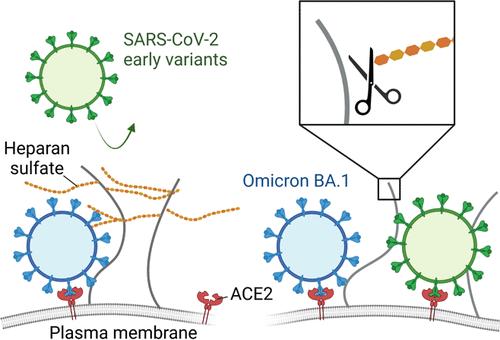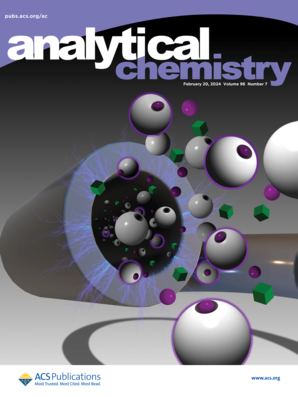Variant-Specific Interactions at the Plasma Membrane: Heparan Sulfate’s Impact on SARS-CoV-2 Binding Kinetics
IF 6.7
1区 化学
Q1 CHEMISTRY, ANALYTICAL
引用次数: 0
Abstract
The spread of SARS-CoV-2 led to the emergence of several variants of concern (VOCs). The spike glycoprotein, responsible for engaging the viral receptor, exhibits the highest density of mutations, suggesting an ongoing evolution to optimize viral entry. This study characterizes the bond formed by virion mimics carrying the SARS-CoV-2 spike protein and the plasma membrane of host cells in the early stages of virus entry. Contrary to the traditional analysis of isolated ligand–receptor pairs, we utilized well-defined biomimetic models and biochemical and biophysical techniques to characterize the multivalent interaction of VOCs with the complex cell membrane. We observed an overall increase in the binding affinity for newer VOCs. By progressively reducing the system complexity, we identify heparan sulfate (HS) as a main driver of this variation, with a 10-fold increase in affinity for Omicron BA.1 over that of the original strain. These results demonstrate the essential role of coreceptors, particularly HS, in the modulation of SARS-CoV-2 infection and highlight the importance of multiscale biophysical and biochemical assays that account for membrane complexity to fully characterize and understand the role of molecular components and their synergy in viral attachment and entry.

求助全文
约1分钟内获得全文
求助全文
来源期刊

Analytical Chemistry
化学-分析化学
CiteScore
12.10
自引率
12.20%
发文量
1949
审稿时长
1.4 months
期刊介绍:
Analytical Chemistry, a peer-reviewed research journal, focuses on disseminating new and original knowledge across all branches of analytical chemistry. Fundamental articles may explore general principles of chemical measurement science and need not directly address existing or potential analytical methodology. They can be entirely theoretical or report experimental results. Contributions may cover various phases of analytical operations, including sampling, bioanalysis, electrochemistry, mass spectrometry, microscale and nanoscale systems, environmental analysis, separations, spectroscopy, chemical reactions and selectivity, instrumentation, imaging, surface analysis, and data processing. Papers discussing known analytical methods should present a significant, original application of the method, a notable improvement, or results on an important analyte.
 求助内容:
求助内容: 应助结果提醒方式:
应助结果提醒方式:


